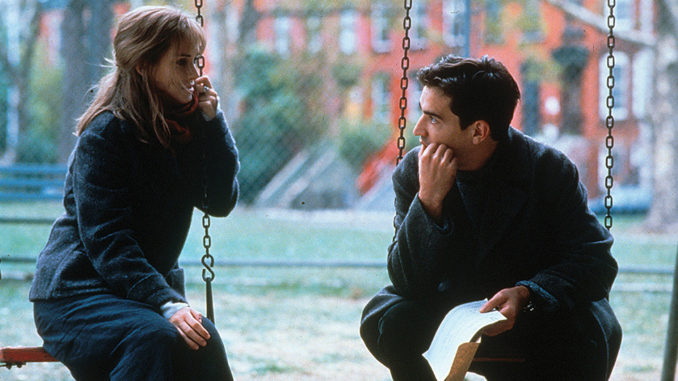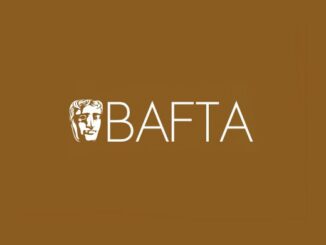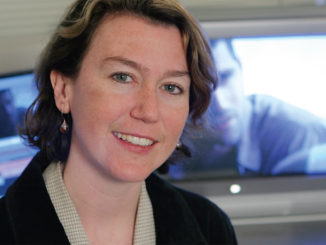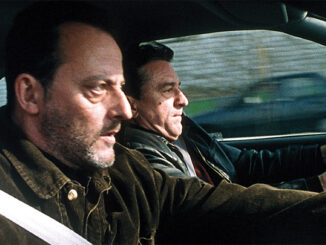
by Christopher Kroll
I grew up in Santa Clarita during the 1970s. In my early teens, I’d go to work with my dad, Leonard Kroll, who, at the time, was the head of post-production at 20th Century-Fox. My favorite thing was accompanying him to QC-check 35mm release prints. I never knew what I was going to see — it’d be anything from Alien to Norma Rae (both 1979). Getting lost in a story with no previous expectations is something I’ve never been able to re-create. But because of that experience, I enjoy all kinds of movies whether or not I fit the intended demographic.
My uncle, Bob Wyman, was an editor (Rosemary’s Baby, 1968; Logan’s Run, 1976, among others), so growing up around post-production I felt drawn to it though I didn’t know exactly where I would land. My first job in the business was as a PA in accounting on the film Star 80 (1983). Delivering the weekly paychecks gave me the opportunity to look behind the scenes of every department, and I liked how editorial was separate from the chaos of production.
Upon high school graduation, I got an interview for an apprentice editor position on the non-union show Doin’ Time (1985) and was fortunate to get hired. My first task was to reconstitute KEM rolls. That meant restoring the film the editor didn’t use back into a linear order based on sequential numbers stamped at every foot (code numbers). Then break apart and spool each take into Moviola rolls. I learned how to splice and read a codebook. When the production company folded, Warner Bros. picked up the show for completion. Because Warner was union, I got my 30 days and was able to join the Editors Guild.
I apprenticed for a few years before moving up to assisting. When a film I was on previewed poorly, A-list editor Lou Lombardo was brought in to do a fix. I watched him untangle the story and give it pace. One shot panned from one character all the way around a room full of people to another character. It took forever but we were tied to the start and stop of the shot. Lombardo made a cut in the middle that flowed seamlessly, trimming the shot by two-thirds. My favorite response ever was when I asked him how he did it, he said, “You think you’re playing with kids?” He gave me my foundation for visual storytelling.
I could foresee that digital editing would replace film so I took an Avid class and was soon hired by editor Anne Goursaud, ACE, to assist her on Lost Souls (2000). One day, her friend needed help editing a directing reel. Goursaud took random footage and creatively made it haunting and beautiful. I learned how an editor could be an artist.
In 2005, I made a push to become an editor. I set up Avid Xpress Pro on my laptop with an external gigabyte drive, a second monitor and a bookshelf stereo for sound — ready to take on any editing project to build my credits. My first gig was Good Dick (2008) with Jason Ritter. I sat with the director every day for months. Our heads exploded when we got into Sundance.
Unfortunately, our success didn’t help my career, mainly because that was 2008. The economy was in a severe recession — the whole industry downsized! Everyone in entertainment was struggling to keep afloat. Opportunities to move up seemed scarcer than before.
I started alternating — assisting one for them, then editing one indie for me. Editing opportunities in features were shrinking, so I focused on a move to television and found a niche with editors who would let me practice cutting. Sometimes I’d get bumped up, but more often, the show would get canceled and I’d have to start over.
I spent the next few years assisting on shows that promised to move me up to editor if they got picked up (they didn’t) and then hooked up with editor Larry Maddox, ACE. He took me under his wing and introduced me to his agent who started putting my name out there.
Soon, I got a call for an interview on the ABC sitcom American Housewife (2016-present). I wanted this editing job so badly that I cross-referenced every producer on the show to anyone with whom I had worked and found a connection, Tad Quill. He said he’d put in a good word for me. At the interview, not only had Quill called, but Eric Garcia (another producer with whom I’d worked) had also recommended me. I got the gig!
I’ve worked with some brilliant editors and tried to learn something from them all. What I like most about post-production is that it’s where all the pieces come together; it’s where the show is made.





